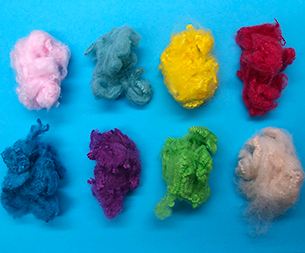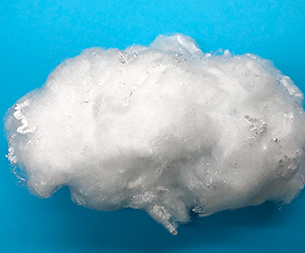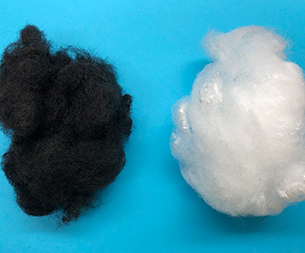In May of this year, my country's exports have been negatively increased, and the trend of growth rate and falling will continue. From the beginning of the year to the April, the drainage of textile and apparel has achieved growth, but the increase in increased month after March, the first 16.8% negative growth in May. After removing the epidemic prevention materials, the export of the previous month increased by 72.8%, and the increase was narrowed in the previous period. Since last 2nd to 3rd quarters is the peak export peak, the initial predictive monthly export will continue until the end of the third quarter.
The global vaccination rate increased by 12 percentage points, and it is expected to be further recovery in the second half of the year. As of June 24th, according to Oxford University, the global accumulated report inoculated with new crown virus vaccines, with a vaccination rate of 22.59%, which was extended by 12 percentage points from May 24. Among them, the developmental economy inoculation rate is generally more than 40%. Some experts predict that the current vaccination speed is estimated, the EU can reach a group immunity in the second half of the year, and the demand for main economies will further return to normal.
The RMB exchange rate is repeated short-term fluctuations, and the long-term appreciation trend is still not reversible. In June, the Federal Reserve released the rate hike signal, and the US dollar index rose rapidly. At the same time, in China's central bank monetary policy adjustment, the regular project surplus is a common promotion of the factors such as the decline in RMB support, and the renminbi will pay a paragraph of the US dollar. On June 24th, the RMB pairs of the US dollar exchange rate was 6.4824 yuan, depreciated 203 points, and depreciated for the eighth, the accumulated depreciation of 968 points. Compared with the high height of June, the accumulated depreciation is 1252 points. From this, in a short manner, the RMB exchange rate two-way fluctuations will become normal. In a long time, China's economic growth rate and labor productivity increased to the price of renminbi laying a good foundation, which determined the renminbi long-term maintenance appreciation trend. Enterprises must pay attention to foreign trade activities, pay attention to renminbi long, short-term trend, timely adjustment of business strategies, and develop long-term plans for exchange rate trends.
From January to May, the national textile apparel trade volume is 126.53 billion US dollars, an increase of 18.3% year-on-year. Among them, the export is 115.11 billion US dollars, an increase of 15.7% over the same period of 2019; the import of $ 1.442 billion, an increase of 14.2%, an increase of 13.2% in the same period in 2019, accumulating trade surplus 103.69 billion US dollars, 17%, in 2019 A 15.9% increased.
In May, the national textile apparel trade volume is 2.701 billion US dollars, down 13.5% year-on-year, an increase of 4% from the same period in 2019, an increase of 3.2% from the previous month. Among them, exports are $ 24.84 billion, down 16.8%, an increase of 4.3% over the same period in 2019, an increase of 4.17 billion US dollars, an increase of 59.1%, an increase of 1% in the same period in 2019, and decreased by 9.4%. The trade surplus of $ 22.67 billion in the month, fell by 20.4%, an increase of 4.6% over the same period in 2019, an increase of 6%.
Textiles have fallen to the export of the month
As the external market demand is slightly improved, the epidemic prevention materials have continued to fall, the same year is large and other factors. In May, the export of textile and apparel continued to climb, and the export rate of the previous month has grown, but the export is a year-on-year, which has a negative growth in the year. In 2019, the same period increased by 4.3%, the increase fell over the previous period.
The decline in the month is mainly dragged down from textiles, and the decline in textiles reaches 40.8%, which is 5.3% compared to 2019. The costume increased by 37.6%, an increase of 3.5% compared to 2019.
Following and continued to grow in Japan exports
The US and ASEAN markets maintain relatively stable and sustainable growth, and the EU has grown weaknesses with Japan exports. In the second quarter, the textile and apparel has weakened the main market export growth. It will be apparent from the figure below. In April, I have basically presented growth in the four major key markets and the export of commodities. The trend of falling, it is expected that this trend will remain until the end of the third quarter.
As the largest export market in my textile and clothing, the "stabilizer" of its market is still outstanding. From January to May, I reached $ 29.2 billion, a year-on-year increase of 23.3%, an increase of 23.4% over the same period in 2019. Among them, the key commodities increased by 62%, down 1.8% from 2019, and basically returned to the premature level.
The demand for the EU market rebounded, but it is insufficient. From January to May, I was $ 16.57 billion in the EU textile and clothing, a year-on-year decline, an increase of 18.5% over the same period in 2019. Among them, the key commodities increased by 30.9%, an increase of 6.7% from 2019. Among them, the export growth of export growth in May, 16.4% decreased.
The Japanese market fluctuations are obvious, and the growth is limited. From January to May, I decreased by 8.9% year-on-year, an increase of 9.2% over the same period in 2019. Among them, the key commodities increased by 8.4% year-on-year, down 2.7% from 2019.
The ASEAN market is relatively stable and exports to maintain double growth. From January to May, my export of ASEAN has increased by 42.2% year-on-year, an increase of 23.4% over the same period in 2019. Among them, the focus of the yarn fabric increased by 41.4% year-on-year, an increase of 5.9% from 2019.
The share of Chinese products in the three major key markets remains high, and the proportion of European and American markets is still higher than the level of 2020 and 2019, and the Japanese market has dropped slightly. ,
From January to March, the EU's 27 countries imported 3301 billion US dollars, an increase of 10.7%, an increase of 34.2% from China, accounting for 35.1% from China, which is more than 6 percentage points and 5.2 percentage points from 2020 and 2019.
From January to April, the United States imported $ 42.79 billion from the world, an increase of 25.1%, from China Import an increase of 43.4%, China accounted for 30.9%, higher than 2020 and 2019. Among them, textiles account for 36.8%, lower than in the same period in 2019 and 2020, and costumes accounted for 28.8%, all higher than in 2019 and 2020.
From January to April, Japan's imports of 4% from China, China accounts for 55.1%, less than 2020 and 2019. Among them, the textile is 57.8%, less than 2020 in the same period, higher than the same period in 2019; costumes account for 55.2%, higher than 2020, lower than the same period in 2019.
The export of epidemic prevention materials is further expanded
The export of epidemic prevention materials is further expanded, and the export of large-class commodities in clothing maintains a good growth situation. In May, the export of textile epidemic prevention materials continued to decline, and the decline was further expanded. The decline in the monthly medical masks and medical protective clothing reached 93.4% and 86.4% respectively, and the accumulated exports from January to May decreased by 75.1% and 44.7% respectively.
Textiles are affected by the decline in masks, the export of May 40.8% in May, and the actual increase of 71.5% after removing the mask, and increased by 1.6% in the same period in 2019. Among them, the yarn fabric has increased by 82.3%, down 5.6% in the same period in 2019. From January to May, the cumulative export of textiles decreased by 2.9%. After removing the mask, the actual growth increased by 48.3%, with an increase of 9.4% in the same period in 2019, of which the yarn fabric has increased by 45%, and the growth rate of 2% in 2019.
Although the clothing is also affected by the protective service, the momentum of export growth is strong under the driving of external demand. In May, the export of May increased by 37.6%. After removing the protective clothing, the actual growth was 74.2%, which was 2.7% in the same period in 2019. Among them, the total needle of the needle has increased by 38.2%, and it increases by 4% in the same period in 2019. From January to May, the accumulated export increased by 48.2%. After removing the protective clothing, it actually increased by 56.9%, and the growth rate increased by 12.1% in 2019, including 41.4% of the needle of the needle clothing, which increased by 7.2% in 2019.
Note *: The mask and protective clothing are based on the statistics of China Customs HS8-bit code, and the statistics are slightly large.
The main provincial and municipal exports slowly slow down
From January to May, the national key exports, the city (district) exports still maintained growth, of which the top five of Zhejiang, Jiangsu, Guangdong, Shandong and Fujian exports were more rapidly increased than in the same period in 2019. However, from the single month, the export will be significantly faded, and the exports of Guangxi, Guangdong, and the China, and the export of Guangxi, the western, and the China, and the exports of Hunan, Henan, and most of the other regions. The increase was significantly faded.
Textile imports and gaps in the previous year
Imports of clothing imports are not reduced, and the gap between textile imports and the same level in 2019 will be further expanded. The import of clothing presents a good development, achieving continuous, stable growth. In May, costume imports increased by 80.7% and 34.2% respectively from 2019, including 85.9% and 27.8% respectively. From January to May, the import of clothing increased by 58.9% and 46.2% respectively from 2019.
Textile monthly imports rose slightly, increased by 48.1% of the month, increased by 18 percentage points from the previous month, but decreased by 12.3% compared with 2019, and the decline continued to expand from last month. Among them, there is 15.3% of the large commodity yarn fabric. From January to May, the import of textiles increased by 7.4% year-on-year, down 3.1% from the same period in 2019.
Textiles increased by 7.4% year-on-year, and fell from the previous month's accumulation, with a decrease of 3.1% compared with 2019.
Cotton imported price
In May, the amount of cotton imports continued to fall, and the import of imports of 1.73 million tons, a year-on-year increase of 147%. Imported cotton prices have risen months, and the import of imports in May to $ 1980 / ton in May, which has been high in last year.
From January to May, the overall growth of cotton imports rapidly, with a total import of 13.74 million tons from the whole world, an increase of 70% year-on-year. From the United States, Brazil, India and Burkina Faja Imports all achieved growth from 70% from Australia imports.
(Source: China Textile Import and Export Chamber of Commerce)
- What factors are Polypropylene s
- From January to August this year
- Polypropylene staple fiber take
- Textile industry scale and curre
- In what fields can polypropylene
- In the first half of 2024, the e
- Why is polypropylene staple fibe
- Downstream market mentality caut
- Orders in the textile market are
- How to increase the performance
- Markets
- Automotive Products
- Nonwoven Lining
- Geosynthetics
- Liquid Filtration
- Apparel and Textiles
- Hygiene Products
- Building and Construction
- Other Markets
- Contact Us
- Contact Haibang





